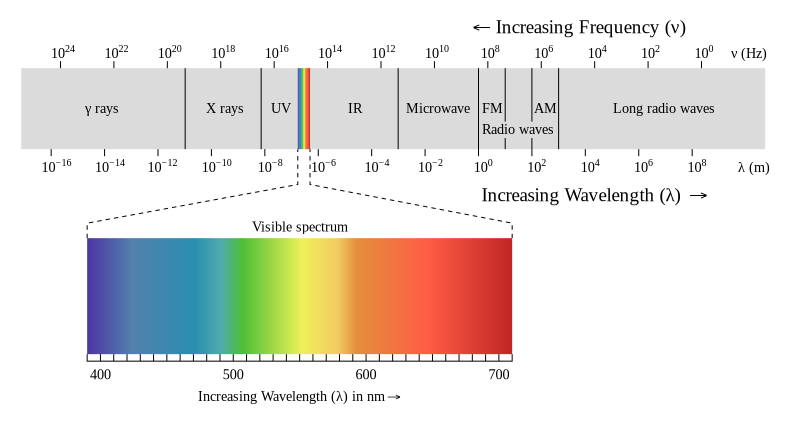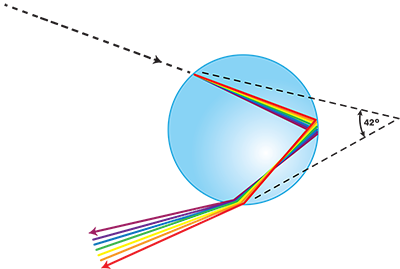Light: we see it every day in buildings, outside, and on our screens. In fact, seeing things at all is just light going into your eyeballs. It’s often taken for granted, but light is the source of a tremendous amount of beauty around us. And I don’t mean that in a metaphorical or spiritual way, either; I mean that very literally. Light interacts with our natural world in a variety of ways, producing the astounding scenes that come to mind when we think of “natural beauty.” Let’s take a look at two different types of light-matter interactions and how they shape two different colorful phenomena.

First up is scattering & sunsets. When a light wave hits a very small particle, it can bounce off of it, or scatter, in a random direction. Think billiard balls, except way tinier. This happens much more frequently for shorter wavelengths of light (blue and violet) than for longer ones (red and orange). In other words, blue light scatters more efficiently than red light. The Earth’s atmosphere is chock-full of very small particles. When the Sun is above us, its white light passes through the atmosphere, where the shorter wavelengths scatter off of small particles, and that scattered blue light comes from all directions into our eyes to produce that storybook blue sky. Meanwhile, the longer wavelengths aren’t scattered and the Sun appears yellow. But things change when the Sun is low in the sky, like at sunset. From the sunlight’s perspective, it has more atmosphere to travel through. The shorter, blue wavelengths all get scattered away, while the stunning reds and oranges get through to our eyes, giving a sunset view that should be narrated by David Attenborough.

When the Sun is low in the sky, its light travels further through the atmosphere. Blue light scatters away, and the red and orange wavelengths give us picturesque views [Source: UK Met Office]
Next, we have refraction and rainbows. Imagine this: you’ve poured yourself a tall glass of life-sustaining water. You stick a straw in and notice that it looks… funny, almost like it’s bent? This is due to what’s called refraction. We tend to think of “the speed of light” as a constant, but it changes depending on what it’s traveling through. Similar to how people tend to swim slower than they run, light also slows down in water. This causes it to bend, or refract, when it hits water at an angle, producing sometimes goofy images. But similar to the scattering we discussed above, the angle of that bending is different for different wavelengths of light. A water droplet, then, can act like a prism, splitting up white sunlight into the familiar ROY G. BIV. When you walk outside after a rainstorm, that brilliant, prismatic arc in the sky is because of sunlight bouncing around in lots of tiny water droplets.

Water droplets in the air act as prisms to split up white light and give us a map to a pot of gold. [Source: NOAA]
Some might say that over-analyzing the root cause of natural beauty is stuffy or annoying, but knowing how the world works only serves to deepen our intimate relationship and understanding of it.
Peer reviewed by Rachel Haake
That was nice